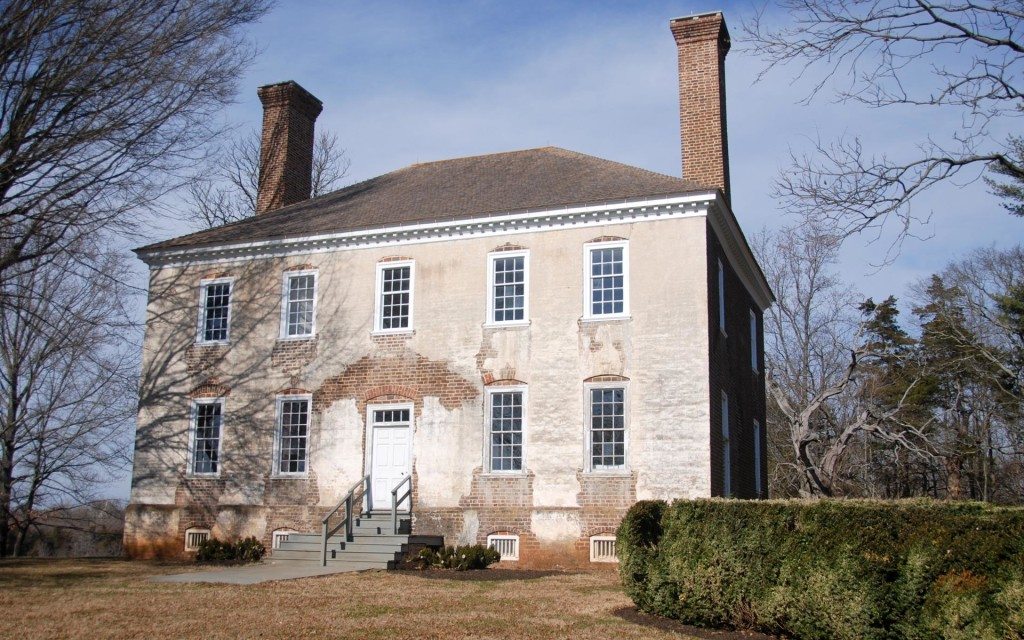Historic Germanna preserves and interprets Salubria, an 18th century Georgian-style house in Culpeper County, that was home to many individuals and families, but also served as a witness to war, societal transformation, and the development of Piedmont Virginia. Read a brief overview of the house’s history below.
Early History
Around 1757, enslaved laborers and craftsmen built the house now known as Salubria under the financing and direction of the Reverend John Thompson, a wealthy Anglican minister, and Butler Brayne Spotswood, the wealthy widow of former lieutenant governor Alexander Spotswood. Spotswood had overseen the colonization and growth of Fort Germanna. Under his oversight, he settled two waves of German immigrants at this frontier fort that quickly grew into a small town. After their indentures expired and the Germans migrated into Fauquier, Madison, and surrounding counties, the town of Germanna remained and served as the first county seat of Spotsylvania – a county created and developed by Spotswood. When he died in 1740, he was one of the wealthiest and most influential men in the colonies. This left Brayne as one of the most eligible widows in Virginia.
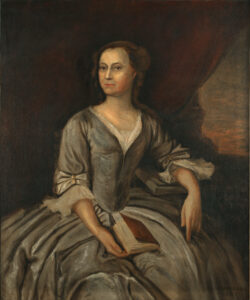
After a brief courtship, in which Brayne initially rebuffed Thompson’s advances for worry that he was below her station, they married in 1742. Their combined capital made it possible to design and construct a grand house on the edge of European civilization. (Brayne had been living at Germanna prior to their marriage). For thousands of years, the Manahoac people, a Siouan-speaking tribe, called the land from the North Anna River to the Potomac River home. But in the early 18th century, pressures from the Iroquois to the north and English to the east led them to emigrate and join with the Monocan tribe to the south.
What’s in a Name?
Salubria is considered one of the oldest brick structures in Culpeper County. It sits on a hilltop one mile east of York. In the mid 18th century, it was a growing village at the crossroads of two colonial thoroughfares. York was renamed to Stevensburg in 1782, named for Revolutionary War general Edward Stevens. The location of Salubria commands a view of the rolling hills of the Virginia piedmont. The Blue Ridge borders the western skyline.
The name “Salubria” dates to around 1830. Thompson referred to the house as “my mansion house and plantation.” The first recorded use of the name “Salubria” is under the Hansbroughs’ ownership. It is the Latin word for salubrious, or healthful. Perhaps this is a reference to the clear breezes that blow over the hilltop.
Construction
Since very few professional architects existed in 18th century Virginia, Salubria’s architects most likely used English pattern books and builders’ manuals, adapted to the Virginia piedmont climate. It is built in the Georgian style, a style of architecture popular during the 18th and early 19th centuries in England and (former) English colonies. Its hallmark feature is symmetry, of which Salubria is nearly a textbook example. The use of brick, instead of wood, is conspicuous, as it was often more expensive and harder to obtain. As a result, in 18th century Virginia, brick buildings showed off the owners’ wealth and prestige in the community. Building a large brick house on top of a hill, overlooking at road, compounded this. The Thompsons built Salubria as a deliberate manifestation of their wealth and power.
Antebellum
The house remained in the Thompson family after the Reverend’s death in 1772. Two decades later, in 1792, Mordecai Barbour, a scion of a prominent Virginia family, bought the house and 500 acres. A decade later, in 1802, Barbour sold Salubria to James Hansbrough, another son of a wealthy landowner the region.
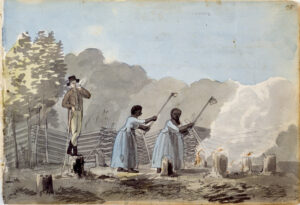
The elder Hansbrough gifted the house and 724.5 acres to his son, John Calhoun Hansbrough in 1830. The son had no interest in his father’s generous gift, putting the house and property up for sale in 1835. It was during this period that the name “Salubria” was first used, but it wasn’t until 1853 when Robert O. Grayson bought Salubria and 430 acres, as Hansbrough parceled off and sold the rest.
Civil War
During the American Civil War, it is likely Grayson’s mother and aunts continued to live in the house, despite Robert’s absence. Robert served multiple stints in the Confederate military before U.S. forces captured him in the spring of 1864. He returned home in June 1865. His brother, John Cooke Grayson, also assisted taking care of the plantation, before he left to serve as a doctor in the Confederate army. In 1862, the arrival of the United States army preempted a massive exodus of enslaved people in Culpeper County to Union lines – and freedom. To preserve his enslaved property, Robert forcibly relocated 16 enslaved women and children to a plantation in Amherst County, away from the U.S. army.
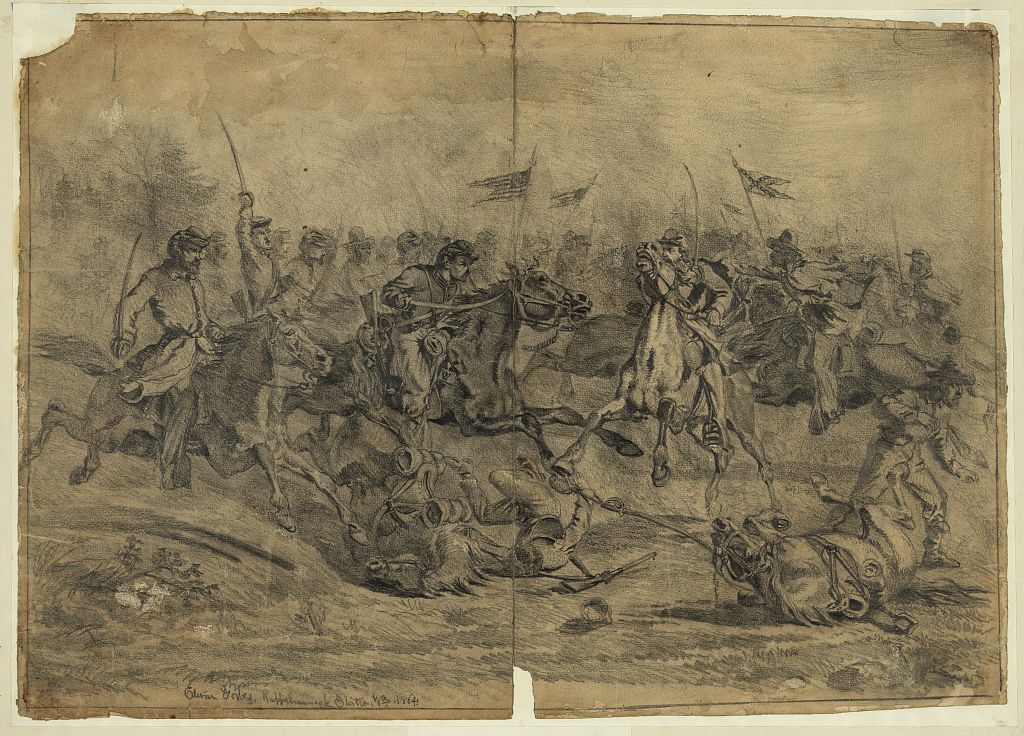
Salubria stood as a silent witness to the Stevensburg phase of the Battle of Brandy Station (June 9, 1863). United States General Henry Davies, and then briefly General James H. Wilson, used the house as a headquarters during the Army of the Potomac’s encampment in Culpeper in the winter and spring of 1863-64. Multiple times, U.S. and Confederate armies marched past Salubria’s front doorstep on the way to or from Germanna – to and from battle. Formerly enslaved people self-emancipated en masse starting in 1862 all around Salubria.
Postbellum and 20th Century
Robert lost ownership of Salubria due to his large and outstanding debts to his brother. As a result, John became the sole owner of Salubria by 1875. After emancipation, the free labor on which Salubria depended no longer existed. This made it more costly to operate such a large plantation, and so pieces of land were parcelled off and sold. Cary Travers Grayson, presidential physician and American Red Cross chairman, was born at Salubria in 1878.
After John’s death, his second wife Georgianna Taliaferro (pronounced Toliver) owned the house until her death in 1926. It then passed to her niece, Nannie Fry, who lived in the house until her death in 1939. She was the last occupant of Salubria, which even by 1939, lacked electricity, plumbing, or any other modern amenities. Nannie’s niece Maria Grayson inherited the house, but never lived in it. She auctioned the furniture and sold the house to Alice Gertrude Grayson and her husband George Harrison, and other Grayson relatives.
In 1950s, the Harrisons ordered a partial restoration of the house and landscape, under the supervision of architect Washington Reed. The effort ended after George’s death in 1958. The house was placed on the Virginia Landmarks Register in 1969. The following year, it was placed on the National Register of Historic Places. Laura May Grayson was the last owner of Salubria. She donated it and 19.5 acres to the Germanna Foundation in 2000. The Grayson family still owns and farms the surrounding acres. In 2011, a 5.8 magnitude earthquake caused damage to the chimneys and roof, after which followed a massive repair project. Today, History Germanna preserves and interprets Salubria.
Telling the Whole Story of Salubria
Although Salubria today exists in isolation, outbuildings and dependencies surrounded the house and covered the property. They existed to sustain the operations of the plantation, which at one point contained over 700 acres. The white inhabitants of the “mansion house” made up a small minority of the people who called Salubria and its environs home. Up until 1865, the forced labor of enslaved individuals made possible the lavish lifestyle of Salubria’s owners. They also worked the hundreds of acres that made up the plantation.
The history of Salubria is not limited to the stories of the Thompsons, Barbours, Hansbroughs, and Graysons. Salubria’s story is incomplete without the stories of Tillian, Antrim, Hercules, Mercury, Tom, Esther, Sinthe, Rachel, Letty, Lucy, Sukey, Queen, Phebe, Ben, Manuel, Milly, Jack, Soloman, Simon, Molly, and John – the people enslaved at Thompson’s mansion house at the time of his death. It is incomplete without the stories of Armistead, Daniel, and Osborne, who self-emancipated from Salubria. It is incomplete without the stories of Caroline, Rachel, Bettie, Oleck, Nat, Maria, James, Ned, Julia, Nancy, May, Alice, Margaret, Moses, James, and Frances, who were forcibly removed from their home to Amherst County to prevent them from seeking freedom. And it is incomplete without the story of Sidney, a sickly enslaved boy who died in 1862.
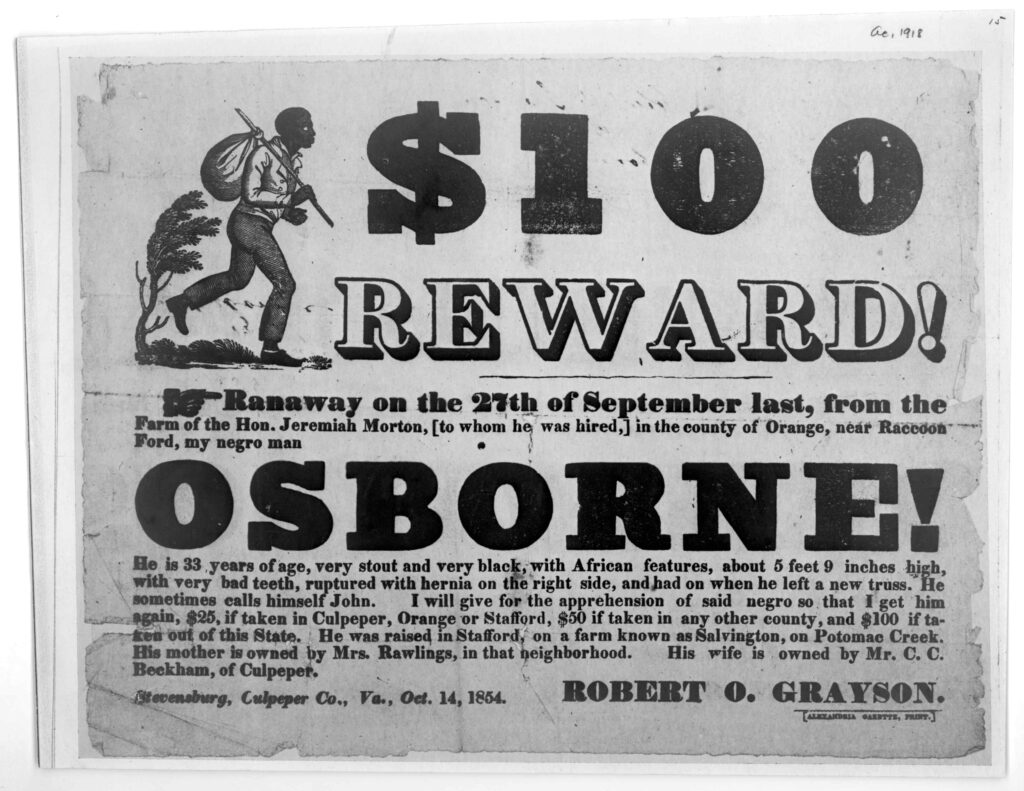
Salubria’s story is made whole with the stories of these named individuals and many other currently unnamed individuals who made lives of their own in the shadow of the big house. It is their stories that make the texture of Salubria’s history so rich. Oral history from Leta Scherquist, longtime caretaker, and the Grayson families supplies a lot of what we know. Primary sources supplemented by this oral history helps us see a more full picture of Salubria and its inhabitants. We are still learning and putting together the puzzle that is Salubria.
